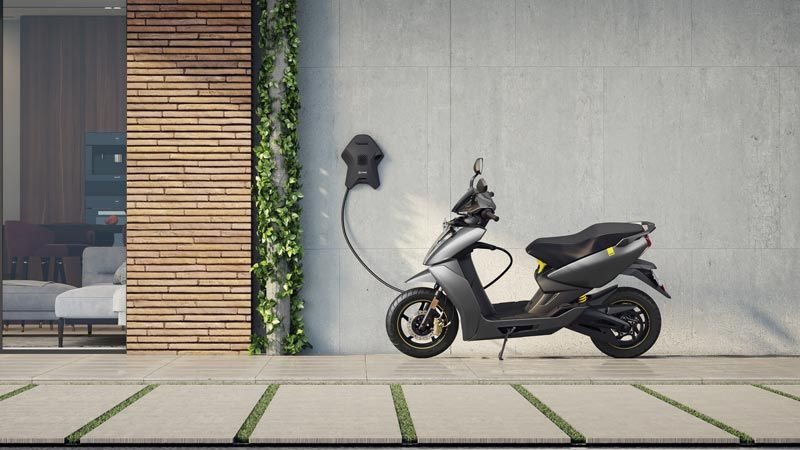不插电:电动汽车充电新方式
迈凯伦时速最快的公路用车支持无线充电
迈凯伦 Speedtail Hyper-GT 是这家英国汽车制造商有史以来速度最快的公路用车。这款气电混合动力跑车的流线型外观极富新锐动感,在测试后期,其原型机在 NASA 位于佛罗里达州的 Johnny Bohmer 试验场上跑出了 403 公里(250 英里)的时速。2020 年量产车型的规格表明,它可以在 13 秒内从 0 加速到 300 公里/小时(186 英里/小时)。
为了能够在这款符合空气动力学的三座汽车停靠是随时为其轻型电池充电,迈凯伦与 Lumen Freedom 进行了合作,以使用其无线电动汽车充电 (WEVC) 系统。Speedtail 是全球第一款采用该系统的汽车。
“未来将有多种充电方式可供选择。目前我们已经实现了静态充电,正向半动态充电迈进。最终目标是全动态充电,支持车辆在超过 100 公里的时速下充电。”
据 Lumen Freedom 总经理 Rod Wilson 和软件团队负责人 Radek Pesina 介绍,尽管感应式无线充电在手机、智能手表和其他小型设备上的应用越来越普遍,但在电动汽车领域,Lumen Freedom 为 Speedtail 提供的无线充电系统仍不失为一项新颖独到的解决方案。

迈凯伦 Speedtail 靠近充电板。(图片所有权:McLaren Automotive Ltd.)
无线充电为电动汽车用户带来便利,对残障人士来说更是如此。此外,无线充电系统减少了城市地区视觉上的杂乱感,也比现有的插电式充电站占用更少的空间。
今后,无线系统能够为等待红绿灯和行驶在高速公路上的车辆充电,让续航里程焦虑成为过去式。“未来将有多种充电方式可供选择,”Wilson 表示。“目前我们已经实现了静态充电,正向半动态充电迈进。最终目标是全动态充电,支持车辆在超过 100 公里的时速下充电。”
对于 Lumen Freedom 来说,Speedtail 项目只是开始。他们的系统具备投产能力,或将为汽车设计、交通运输乃至电网带来巨大转变。
充电性能接受实测考验
WEVC 系统使用谐振感应磁耦合代替了电线、插头和笨重的充电站。电源产生电流,电流从车辆下方地面上的发射板经由气隙传入车辆内置的接收板。电力传输效率可达 92% 甚至更高。
地面组件和车辆组件之间能够无线通信。司机可以通过 10 英寸车载触摸屏或智能设备上的应用来监控充电系统。该系统支持高底盘,因此能兼容包括高性能跑车、家用轿车和 SUV 在内的所有车型。
使用 Lumen 充电板为电动汽车充电。(视频所有权:Lumen Freedom)
Lumen Freedom 自 2016 年成立以来,完善了 WEVC 概念,并开发了全球首个单箱式 11 千瓦系统。Lumen Freedom 现已成为 Witricity 完全认可的许可证持有者。
Lumen Freedom 采用多种方法进行物理测试。他们将一个大型铝制框架(称为龙门架)连接至 Regatron 高压供电系统,用于模拟真实的操作和电源需求。“我们需要计算出有多少电能耗散到周围环境中,又有多少电能实际完成耦合,”Pesina 解释。

在充电板上检测到异物时,会向司机的手机发送警报。(图片所有权:Lumen Freedom)
在无线电动汽车充电过程中,由于系统采用了先进的混合定位技术,对齐车辆与充电板不是难题。Lumen 团队使用计算机控制的步进电机调整高度和水平方向位置,进行对齐测试和分析。
借助仿真技术,团队在系统软件中纳入安全协议,一旦充电板传感器检测到极端偏差,整个充电系统就会自动关闭。WEVC 系统集成了异物检测系统,能够检测出地面充电板上仅有回形针大小的金属物体。然后,它会通过 App 向司机发出障碍物警报。系统将关闭,直到异物被清除。
基于模型的设计加快开发速度
Wilson 明确指出,自动化安全控制是所有系统的标准配置,Lumen Freedom 的产品只是其中之一。不过,基于模型的设计无疑加速了控制系统的开发过程。
整个系统的核心软件模型和主要逻辑(包括地面组件和车辆组件)均采用 MATLAB® 和 Simulink® 设计,Pesina 说道。
具体来说,在开发电动汽车通信控制器、用以管理车辆与地面组件之间通信方面,MATLAB 和 Simulink 发挥了重要作用。该控制器向车辆充电板和车辆内部电池管理系统发送重要消息。Pesina 解释说,这种通信必须从硬连线控制器转移到基于 Wi-Fi 的控制器。
“相比编写 C 代码,(使用 MATLAB 和 Simulink 对系统建模)可以说是快了一个量级。当然,仿真和测试也简单了许多。”
Lumen 的开发人员能够将主状态机快速移入模型。“大约三到四天,初始模型就完成了,”Pesina 表示。“它功能齐全,执行的操作与状态机在 C 代码中执行的操作相同。”

电动汽车通信控制器管理的生物体通知。(图片所有权:Lumen Freedom)
新一轮的需求变更意味着对整个状态机重新建模。开发人员只用了一天就完成了这项任务。“相比编写 C 代码,可以说是快了一个量级,”Pesina 补充道。“当然,仿真和测试也简单了许多。”
使用综合了通信模型、电力电子系统和状态机的模型,可以更容易、更安全地仿真系统的整个运行过程。开发人员可以在他们的工作台上运行无线充电系统的整个周期,而不需要进行电力传输。这样就解放了龙门架和其他设备,可以使用高压电流另行开展受控测试。
供电变革
Lumen Freedom 团队预计,WEVC 系统在 OEM 和基础设施提供商中的普及将带来彻底的变革。由此带来的好处之一是电动汽车的电池将变得更小。“随着无线充电技术和设施日益普及,我们认为,电池尺寸也将缩小,因为人们不再需要随车携带那么多电能,”Wilson 表示。
“我们的系统已经就绪,只要出现需求,就能转向‘车辆到家庭 (V2H)’和‘车辆到电网 (V2G)’场景。”
无线充电也有助于我们进一步迈向“车辆到家庭 (V2H)”和"车辆到电网 (V2G)"场景。Wilson 预计,电动汽车有望为房屋供电,也可能成为向电网回售电力的管道。用户只需将电池储量设置为所需的保留水平,然后在车内或者房间轻点按钮,就能进行电能传输。充满电的车辆可以为照明系统、电视和小家电供电。对于大功率家用电器,系统将改回电网供电。
“测试和概念验证已经全部完成,实际上,在许多采用插电式系统的国家和地区,这套系统已经得到应用,”Wilson 表示。“我们的系统已经就绪,只要出现需求,就能轻松转型。”
Pesina 预计,这一系统有助于稳定电网,并能为能源公司提供额外的能源供应,用于部署到容易发生停电的地区。
“车辆到电网”可以促进可再生能源的应用。Pesina 举例,即使断电,特斯拉 Powerwall 也能为一户人家供电。类似地,当本地电网停电时,电动汽车可以为家用光伏系统充电。
WEVC 系统本身也在发展。“如果将充电板埋设在室外的柏油路面下,即使路面被雪或冰雹覆盖,充电板也能继续向车辆传输电能,”Wilson 表示。
Lumen 系统可以为静止或等待红绿灯的车辆充电,只要车道配备了系统,甚至还能为行驶的车辆充电。(视频所有权:Lumen Freedom)
Lumen Freedom 正在为英国的零排放出租车和小型商用车开发半动态充电。半动态充电无需停车和驶入充电位。该系统能为揽客队列中行驶的出租车充电,每当车辆移至等候位,就会进行少量充电。
全动态充电也即将成为现实。欧洲一个名为 Fabric 的项目历时数年,分析了电动汽车在典型行驶速度下的动态无线电能传输。该项目选择了法国一处 100 米长的试验场地,于 2018 年完成了该系统的测试。项目显示可在中期实现动态无线传输,包括城市公交和长途货运线路,当然也包括家用汽车。在州际高速公路上长途行驶时,动态充电将消除续航里程焦虑,并提供无缝的不间断充电。
随着自动驾驶汽车测试日益火热,无线电动汽车充电正在兴起。2020 年 8 月,密歇根州宣布计划在安娜堡和底特律之间修建一条 64 公里(40 英里)的自动驾驶汽车专用公路。几家知名车厂已计划参与其中。根据设想,这条公路将首先面向共享车辆,而后扩展到个人和货运车辆。
据 Wilson 展望,世界各地的城市都将为自动驾驶电动汽车设置这样的区域,以便其行驶途中充电。“无线充电势不可挡,”他表示。“我们期待无线未来、无限精彩。”

